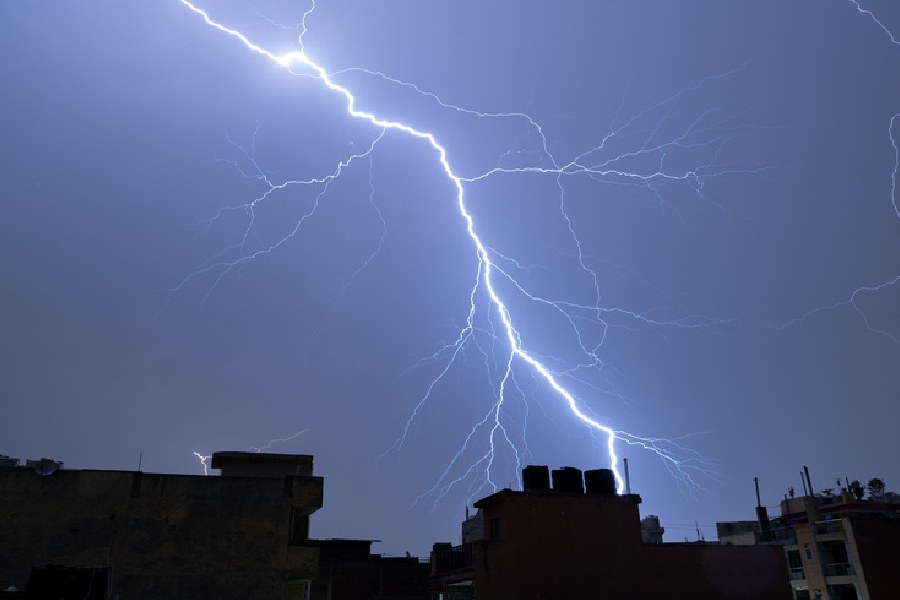A thunderstorm is not a good time to play an outdoor sport or go swimming.
Taking shelter under large trees or plastic shades propped up on metal posts during thunderstorms is not safe as the chances of getting struck by a lightning bolt increases manifold, a senior official of the India Meteorological Department (IMD) said.
“Instead of seeking shelter under trees or shacks one should get inside a building and stay indoors till the storm blows over,” H.R. Biswas, the head of the weather section at the Regional Meteorological Centre in Calcutta, said.
On Thursday afternoon, two teens were killed and two others injured when lightning struck a field where they were playing football in the rain at Narayanpur, not far from the Calcutta airport.
Shafikul Islam, 17, and Jamir Hossein, 19, were declared dead at a private hospital in Chinar Park. The injured teens — Farhan Ali and Shamim Khan were taken to RG Kar Medical College and Hospital.
Khan has been discharged from hospital.
Ali has been admitted to a private nursing home off VIP Road.
According to Biswas, although the probability of a person being killed by a lightning strike is one in a four million population. The fact that the boys were playing football in an open field during a thunderstorm increased the chance of being struck manifold.
The Standard Operating Procedure — Weather Forecasting and Warning Services issued by the India Meteorological Department (IMD) lists what to do in case of thunderstorms or squalls accompanied by lightning.
The handbook lists a lightning safety rule that reads: “Go indoors if, after seeing lightning, you cannot count to 30 before hearing thunder. Stay indoors for 30 minutes after hearing the last clap of thunder.”
“The best protection from lightning strikes is provided by buildings made of concrete. There is a general tendency to take shelter under trees whenever it rains. This should not be done during a thunderstorm. We must not step out for any chores during a thunderstorm as it increases the chances of getting struck,” said Biswas.
Lightning is an electrical discharge triggered by an imbalance in the electrical charge between storm clouds and the ground, or between clouds.
This happens as static electricity is created inside a cloud due to the collision of ions generated by super-cooled water droplets and ice crystals.
“Lightning momentarily heats the air it passes through to temperatures hotter than the surface of the Sun. This causes the air to explode outward, triggering a flash that is followed by the sound of thunder,” said Debanjana Das, an atmospheric scientist with Howard University in Washington DC.
“In Calcutta, where streets often get flooded it is best to avoid waterlogged stretches too as water is a good conductor of electricity,” Das said.
The India Meteorological Department (IMD) handbook lists several safety measures and suggests one should stay away from windows and not stand on a balcony during lightning and rain. Windows and doors must be shut. Home appliances must be unplugged from electrical sockets.
A report published by the World Meteorological Organization (WMO) has listed lightning as a leading cause of fatalities in India, with thunderstorms and lightning claiming around 1,200 lives across the country in 2023.
Bengal is prone to lightning and has become more so in recent years. The state recorded the highest number of lightning strikes from cloud to ground per square kilometre in India last year, according to the 2020 South Asia Lightning Report.











